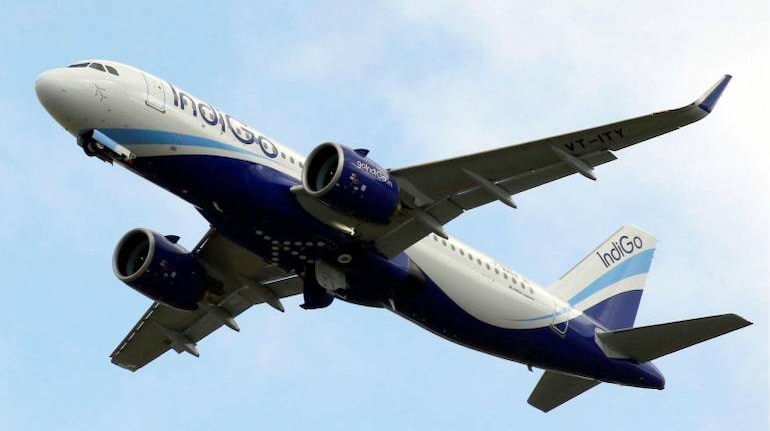



IndiGo, the country’s largest carrier by fleet and domestic market share, saw that market share slip a few percentage points to 51.3 percent in February (from January), indicating that the competition has started deploying additional flights. As the scheduling season transitioned to Northern Summer on March 27, 2022, a total of 25,309 weekly flights were approved by the regulator for all airlines combined.
Interestingly, while IndiGo has been above the 50 percent mark in terms of market share for a while, the airline is to operate only 43.97 percent of total departures. And, incredible as it may sound, the airline with half the market operates to almost three-fourths of the airports across the country. This comes with a 47.76 percent fleet share in the narrowbody and turboprop segments put together.
The airline is in demand
IndiGo is in demand across airports and places. Throughout its history, the airline has never closed a station once it has started operations. It had suspended operations to Jabalpur after the onset of the COVID-19 pandemic but those were relaunched. SpiceJet, AirAsia India and Go First in the business have a history of opening new stations and not continuing if the competition pushes too hard or the new destination does not work in the overall scheme of things.
When it comes to operating approved flights, the airline has the best performance among its peers with near 100 percent compliance with the approved schedule.
New airports
Starting the summer schedule, the airline launched services to Kadapa and Pantnagar. This may not be like the big bang announcement of seven new stations in 2021, but it is an indication of the number of stations the airline has been able to open after taking delivery of its ATR 72-600 aircraft. These are routes where the A320 family cannot land or routes where the traffic isn’t sustainable for the A320 and hence ATRs are deployed to serve these stations.
Coupled with Bhuj and Dharamshala, for which the airline has approvals to fly but hasn’t announced routes for sale as yet, the airline will take its active station count in India to 75. The jury is out on whether that’s a coincidence for the Amrit Mahotsav of Indian Independence or a coordinated effort.
Airports where IndiGo does not fly
Data sourced exclusively for this article from OAG shows that there are 100 operational airports in the country this week. Airports like Ziro or Keshod, among others, have approved schedules but are yet to see start of operations for one or the other reason. The suspension of TruJet has led to certain airports like Jalgaon or Salem falling off the country’s air map.
While the hope is that the suspension is temporary, it has meant that the current operational count of airports has slipped.
With 73 operational airports, this makes IndiGo the largest operator across airports as well with a coverage of 73 percent of operational airports in the country.
There are 27 airports in the country that are operational but not served by IndiGo. They are: Agatti, Bikaner, Diu, Kalaburagi, Khajuraho, Nashik, Lilabari, Pathankot, Pasighat, Kandla, Jamnagar, Jagdalpur, Jharsuguda, Kushinagar, Kishangarh, Kullu, Bilaspur, Porbandar, Pondycherry, Pakyong, Rupsi, Tezu, Tezpur, Nanded, Sindhudurg, Bhuj and Dharamshala.

Will more destinations be added?
The airline had been very choosy in its initial days on expansion, but the last few years have seen IndiGo add destinations at regular intervals. A few airports in the list of those it does not operate to may have operational challenges. For instance, Agatti or Pakyong and a few more, including Kishangarh and Kushinagar, are part of RCS-UDAN, which gives the existing operator exclusivity for a three-year period, making it difficult to launch flights.
A look at IndiGo’s network shows that the airline believes in adding destinations to an existing station. Except for Leh, which it flies to only from Delhi, every point in its network is connected to at least two places, with Hyderabad, Delhi and Bengaluru connected to 50 or more domestic destinations within IndiGo’s network. Such planning helps lower station costs and offers more choices to the consumer. But in the list of unserved airports, there are many where such opportunities may not be possible.
But apart from Bhuj and Dharamshala, where the airline is expected to start service in its summer schedule, it could look at Nanded, Nashik, Khajuraho and Kushinagar, among others, which fit the bill in more than one way. While Nanded and Nashik have seen steady service by airlines in the past, there is a void. Kushinagar and Khajuraho, on the other hand, have the potential to be part of tourist circuit routes IndiGo is planning to build from its Kolkata hub.
That brings us to the question: Is IndiGo running out of domestic stations? No airline operates to all the operational stations in any country, unless you are a monopoly. But these stats show why the airline has been talking more and more about international operations being its game plan for the future.
Find more company related news here
Discover the latest Business News, Sensex, and Nifty updates. Obtain Personal Finance insights, tax queries, and expert opinions on Moneycontrol or download the Moneycontrol App to stay updated!
Find the best of Al News in one place, specially curated for you every weekend.
Stay on top of the latest tech trends and biggest startup news.